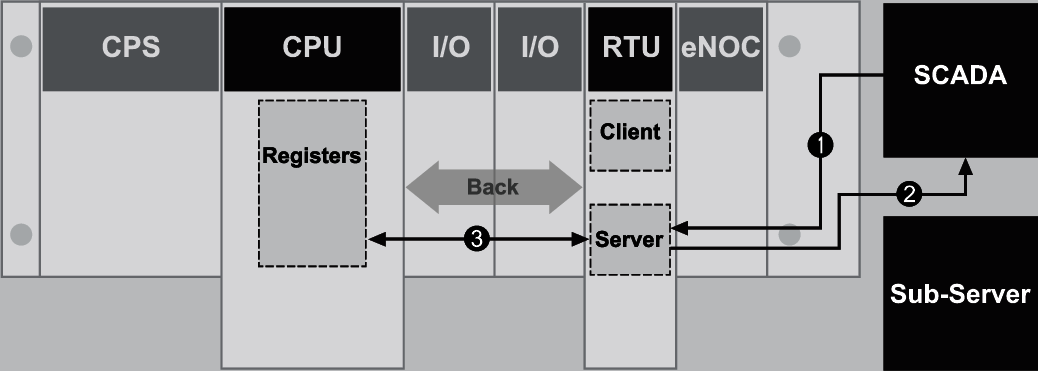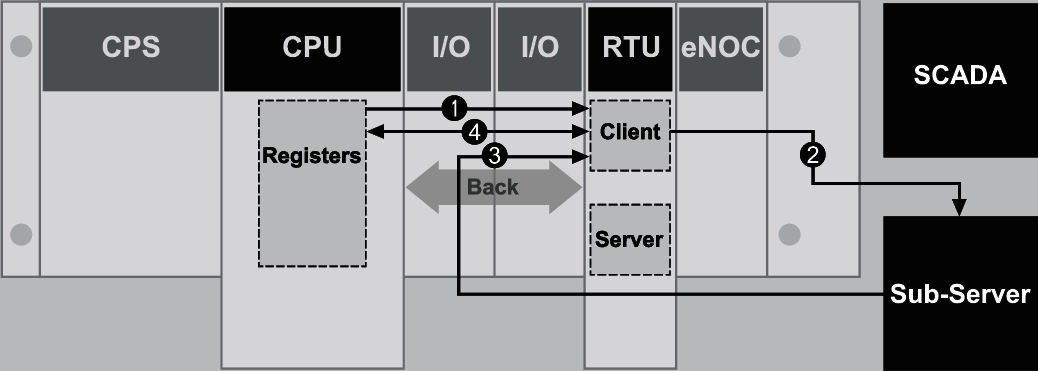Communication Behavior
The BMENOR2200H module is equipped with a dual-bus connector that supports both Ethernet and X Bus communications.
This Ethernet backplane port is used mainly to communicate with the remote client or server with RTU protocols. The backplane interface is used to communicate with the CPU. The main activity of the backplane interface is the synchronization of data between CPU registers and the RTU point database inside the module. The synchronization cycle can be one or more PLC application scan cycles, depending on the data amount and backplane load.
When the Client Channel Receives Events from the Sub-Server
When something significant changes in the sub-server (like
the value of a point), the sub-server sends an event. The system receives
this event and the event is then routed to a SCADA system, as shown in this example:
1 The sub-server sends events to the client channel of the BMENOR2200H module.
2 The client channel updates the point values in the module and the database of the logic server channel and synchronizes the value to CPU registers.
3 Events are routed to server channels according to point configuration.
4 The server channel buffers these events and sends events to SCADA when the communication link is established.
When the Server Channel Receives Request from SCADA
In the RTU system, a SCADA system sends requests (commands) like an Integrity Poll to the server connected to it. The server channel receives this request and sends a response to the SCADA system. With event routing, the behavior of the server channel is exactly the same as a standalone (no event routing) server channel. The client channel and sub-servers are not involved in this case.
This sample illustration shows a request from a SCADA system:
1 The SCADA system sends an Integrity Poll request to the server channel.
2 The server channel responds to the SCADA request with the point values in the database.
3 The point values are synchronized cyclically between the database of the server channel and CPU registers.
When the Client Channel Sends Request to the Sub-Server
The client channel can send requests to a sub-server connected to it, and a sub-server sends the response back to the client channel. The behavior of the client channel in this case is exactly the same as a standalone client channel. The points in the logic server channel should be synchronized with the updated point in the client channel.
Send request to a sub-server example:
1 The application in the M580 CPU sends an Integrity Poll command to the client channel.
2 The client channel sends Integrity Poll requests to the sub-server.
3 The sub-server responds to the request with the value of the latest points.
4 The logic server data base is synchronized while the client channel updates the database.


